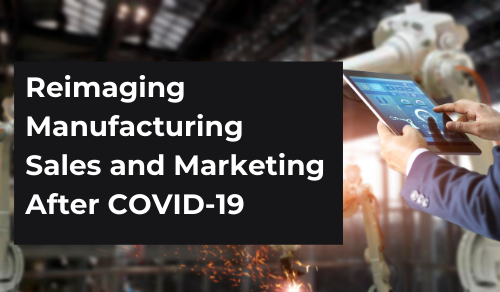 2020 has proven to be the Year of Change. Who would have thought that when budgets were released in January that everything would be turned upside down? The economic disruption triggered by COVID-19 and some companies will cope better than others.
2020 has proven to be the Year of Change. Who would have thought that when budgets were released in January that everything would be turned upside down? The economic disruption triggered by COVID-19 and some companies will cope better than others.
Industries such as airlines, hospitality, tourism, and traditional retail may never fully recover from the disruption. The outcome for industries such as manufacturing is dependent on how companies respond to the disruption.
At one point during the crisis, more than 90% of manufacturing plants in Europe and 65% in the US were closed. Plant closures were initially due to part shortages from China, but as the virus moved globally, closures were to protect workers and reduce the spread of infection (Source: BCG).
Only two years ago, 84% of manufacturers were telling SAP that digital transformation was crucial, but only 3% had completed any company-wide effort. Digital transformation is now an industry-wide effort and is accelerating. Manufacturers have little choice to build the resilience, agility, and scalability they need to react rapidly to today’s uncertain and chaotic business environment.
Digital Transformation is Accelerated
This digital transformation goes beyond the Industry 4.0 technologies to transform operations and supply chain visibility and needs to extend to sales activation and marketing. We are entering a new era of long-term transformative customer engagement, changing the way we sell and market products.
Here are twelve ways of how industrial sales and manufacturing sales and marketing has transformed this year and possibly forever.
- Move to eCommerce – eCommerce changed the face of retail forever, affecting how B2B buyers now research and buy products. B2B buyers are now turning to search engines and manufacturer web sites to research and purchase products. The self-serve model they love for B2C is driving their behavior on the job. Manufacturers and implementing purpose-made B2B commerce platforms that can handle the complex B2B buying processes, multiple decision-makers, PO processing, bulk ordering, and repeat orders.
- Modernize Your Brand – A brand refresh is a makeover for your company. Think of it like a personal makeover ... a better haircut, up-to-date outfit, and new shoes that transform how a person is perceived. Differentiate with an updated look and feel. You will want to stand out from the pack with a modern logo, modern images, new tone, fonts, and colors.
- Participate in Virtual Events – Most manufacturers relied solely on in-person industry events as the primary source of lead generation; however, large in-person events are on pause and may never return to 2019 levels. Marketers are looking at participating in online industry events, DIY webinars, and sponsored webinars. We believe that once this pandemic passes, virtual events or hybrid events will continue to evolve.
- Turn your Tradeshow Booth into a Webinar Series –Trade shows provide an opportunity to showcase your solutions. Attendees will wander around your booth, looking at various sections or stations, educating themselves on your offering. Use your plan as a basis of a webinar series. Create a webinar for each station in your tradeshow booth.
- Create a 3D Rendering of your product – Develop a 3D tour of your products with interactive storytelling. Sales and marketing teams can use this to engage prospects earlier in the buying cycle, train sales and channel teams faster, and shorten sales cycles.
- Develop online demos – A sales demo shows a prospect exactly how your product or service meets their specific needs and can mitigate any pain points and issues they are experiencing. Use video to create an online demo of your offerings. Upload to YouTube, which is the second largest search engine. Include a keyword in the video name, optimize the description, tag and categorize using keywords, and include the keyword in your video.
- Optimize Your Website– Your website is more important than ever before. It is the first thing prospects encounter when discovering your company. Ensure that it is “sales optimized” and provides the information that prospects and buyers need.
- Be Discovered – As your buyers move online, your company and products must come up when prospects search on your product category. Make sure that you have a strong technical SEO program and content program that supports SEO.
- Build Demand Generation Through Paid Campaigns – To reach prospects beyond your current database (the prospects you used to see at tradeshows), you will need to advertise online through PPC, social media, or sponsored opportunities from media companies.
- Run an ABM Campaign – Account-based marketing (ABM) is a great way to penetrate large or key accounts with several decision-makers and influencers. AMB uses personalized campaigns designed to engage each account, basing the marketing message on the specific attributes and needs of the account.
- Refresh Sales and Marketing Materials – Make sure all of your sales and marketing materials are up-to-date with updated messaging and modernized branding.
- Boost eMail Lead Nurturing – Hubspot recently released data that showed email marketing is working better than ever as compared to sales emails or other tactics.

Download the eBook below to learn how six manufacturers transformed sales and marketing for growth.




